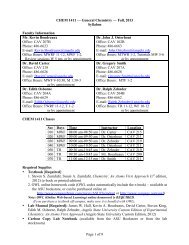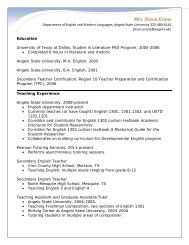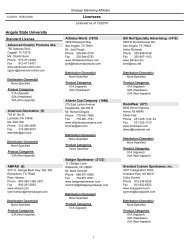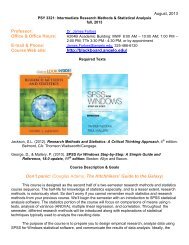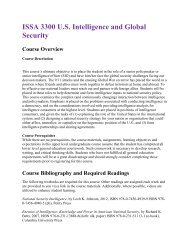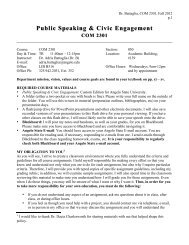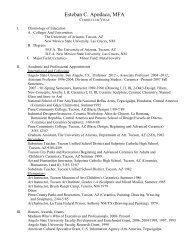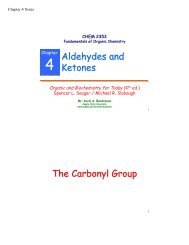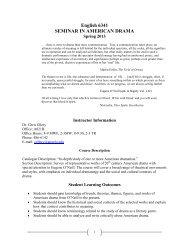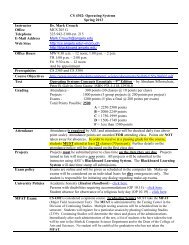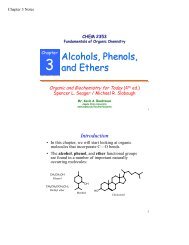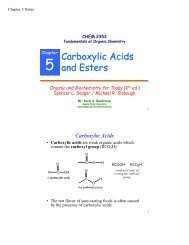Download - Angelo State University
Download - Angelo State University
Download - Angelo State University
Create successful ePaper yourself
Turn your PDF publications into a flip-book with our unique Google optimized e-Paper software.
Chapter 11 Nucleic Acids and Protein Synthesis<br />
Mutations,<br />
Recombinant DNA,<br />
and<br />
Genetic Engineering<br />
Mutations<br />
• Mutations may be beneficial to an organism by<br />
making it more capable of surviving in its<br />
environment, ultimately (over millions of years of<br />
accumulating changes) leading to the evolution of<br />
new species.<br />
• Since much of an organisms DNA does not code for<br />
anything, mutations in these regions are neutral.<br />
• Other mutations can be harmful, either producing<br />
genetic diseases or other debilitating conditions.<br />
Restriction Enzymes<br />
• Restriction enzymes, found in a wide variety of<br />
bacterial cells, catalyze the cleaving of DNA<br />
molecules. These enzymes are normally part of a<br />
mechanism that protects certain bacteria from<br />
invasion by foreign DNA such as that in viruses. In<br />
these bacteria, some of the bases in their DNA have<br />
methyl groups attached:<br />
O<br />
N<br />
NH 2<br />
N<br />
CH<br />
5 3<br />
H<br />
5-methylcytosine<br />
CH3 1<br />
N<br />
• The methylated DNA of these bacteria is left<br />
untouched by the restriction enzymes, for foreign<br />
DNA that lacks these bases undergoes rapid<br />
cleavage, and is rendered nonfunctional.<br />
O<br />
N<br />
H2N N<br />
N<br />
H<br />
1-methylguanine<br />
67<br />
69<br />
71<br />
Mutations<br />
• Mutations are any changes resulting in an incorrect<br />
base sequence on DNA.<br />
• Even though the base-pairing mechanism provides a<br />
nearly perfect way of copying DNA, on average one<br />
out of every 10 10 bases are copied incorrectly.<br />
– This leads to a change in the amino acid sequence<br />
in a protein, or causes the protein not to be made<br />
at all.<br />
• Mutations occur naturally during replication. They<br />
can also be induced by environmental factors:<br />
– ionizing radiation (X-rays, UV, gamma rays).<br />
– mutagens, which are chemical agents.<br />
Recombinant DNA<br />
• Recombinant DNA is produced when segments of<br />
DNA from one organism are introduced into the<br />
genetic material of another organism.<br />
• ―Genetic engineering‖ of E. coli to include the gene<br />
for the production of human insulin enables large<br />
quantities of insulin to be made available for the<br />
treatment of diabetes.<br />
Restriction Enzymes<br />
• Restriction enzymes act at sites on DNA called<br />
palindromes, where two strands have the same<br />
sequence but run in opposite directions:<br />
point of attack<br />
• Restriction enzymes are used to break DNA up into<br />
fragments of known size and nucleotide sequence,<br />
which can then be spliced together with DNA<br />
ligases.<br />
68<br />
70<br />
72



